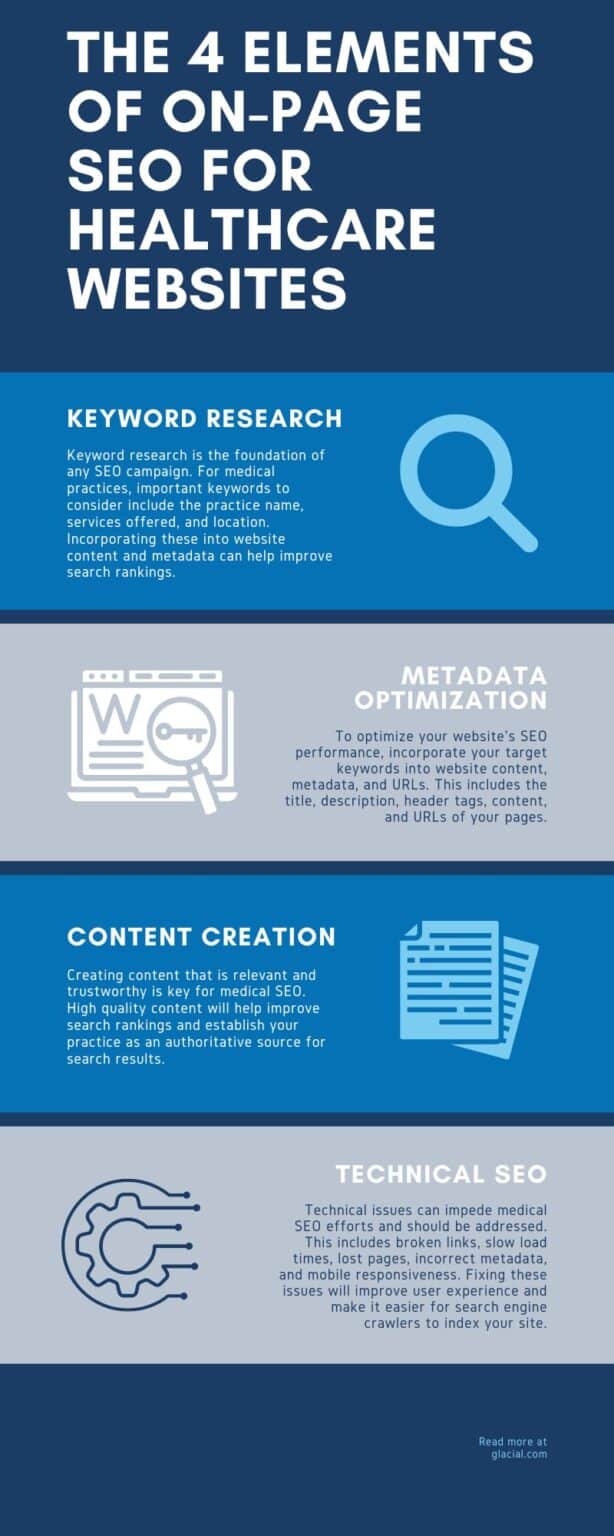Posted on February 3, 2023
The 4 Elements of On-Page SEO for Healthcare Websites
In today’s digital age, having a website is crucial for any medical practice. However, simply having a website is not enough – it needs to be optimized for search engines in order to reach the right audience and drive more leads to your site. Use these four pillars of on-page healthcare SEO to understand how to optimize your website for better search rankings.
1. Keyword Research
The first step in any SEO campaign is to conduct thorough keyword research. This involves identifying the keywords and phrases that your target audience is searching for and incorporating them into your website’s content and metadata. For medical practices, some of the most important keywords include the name of your practice, the services you offer, and the location of your practice.
2. Metadata Optimization
Once you’ve identified your target keywords, it’s time to optimize your website’s on-page elements. This includes the meta tags (title, description, and header tags), schema, the semantic content structure, and the URLs of your pages. Make sure to include your target keywords in these elements in a natural and organic way.
3. Content Creation
Creating high-quality, relevant content is one of the most important aspects of medical SEO. By providing valuable information to your target audience, you’ll not only improve your search rankings but also establish your practice as a trusted authority in your field. Some tips for creating great content include:
- Utilizing subheadings, tables, and lists to make your content easy to read.
- Including images and videos to break up text and make your content more visually appealing and interactive.
- Using internal and external links to guide users to complementary articles across your website, and help crawlers find valuable content for displaying in results pages.
- Limit the use of AI content creation tools. The content generated may be factually incorrect, and search engines have been known to punish purely AI generated content for SEO purposes.
4. Technical SEO
In addition to on-page optimization and content creation, it’s also important to address any technical issues on your website that could be hindering your search rankings. This includes things like broken links, slow load times, lost pages, incorrect metadata, and mobile responsiveness. By fixing these issues, you’ll improve the user experience for your visitors and most importantly, make it easier for search engine crawlers to navigate and index your site.
Using On-Page SEO for Medical Websites
SEO is an ongoing process that requires careful planning, execution and monitoring. Search engines are continually updating their algorithms and your competitors are constantly updating their websites as well. By understanding these four buckets of on-page SEO, you’ll be well on your way to improving your search rankings and reaching more potential patients. Remember that SEO is a long term game. The longer you invest in your website’s SEO, the more you’ll reap the benefits in terms of traffic and lead to patient conversions.

